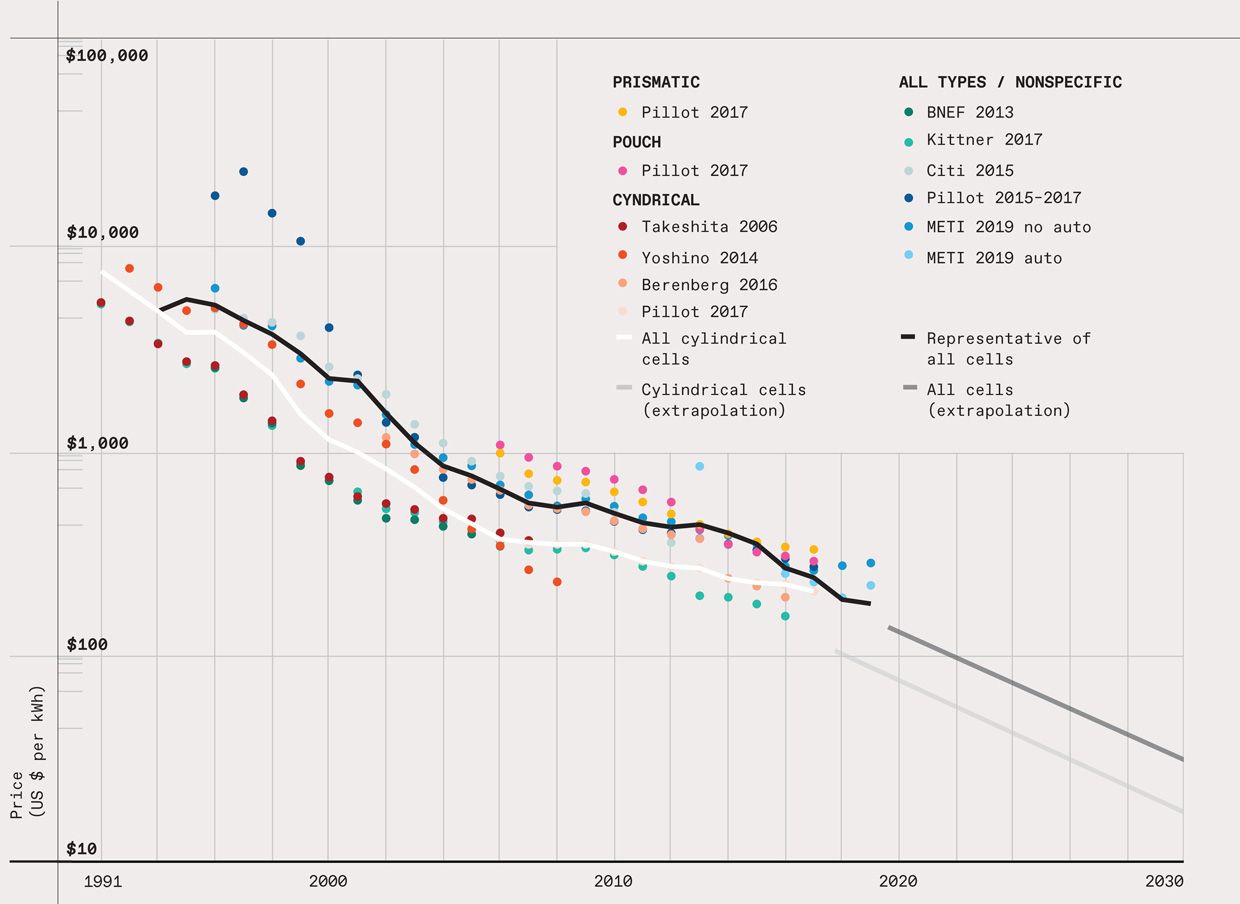Chart: Behind the Three-Decade Collapse of Lithium-Ion Battery Costs
 Sources: Ziegler & Trancik/ Energy & Environmental Science/ Harvard Dataverse
Sources: Ziegler & Trancik/ Energy & Environmental Science/ Harvard Dataverse Behind clean energy today is a sharp, continuing drop in photovoltaic solar-cell prices. And behind the scenes, the prices of lithium-ion batteries are plummeting just as quickly. Between 1991 and 2018, the average price of the batteries that power mobile phones, fuel electric cars, and underpin green energy storage fell more than thirtyfold, according to work by Micah Ziegler Jessika Trancik and at the Massachusetts Institute of Technology.
Engineers and energy-policy planners benefit from knowing future battery prices, but unlike solar prices, they aren't always readily available. Lithium-ion batteries tend to be manufactured or bought in bulk by large companies. Those contracts aren't necessarily public documents," says Ziegler. That's partly why the drivers for the price decline are, for Ziegler and Trancik, an open area of research. Ziegler and Trancik published their comprehensive survey of studies of lithium-ion battery prices in a recent issue of the journal Energy & Environmental Science.
Batteries today, the researchers say, have mass-production scales and energy densities unthinkable 30 years ago. Economies of scale and technological improvements appear set to drive storage costs further, approaching the $100 per kilowatt-hour threshold. At about that level, the energy costs for EVs will reach parity with those for gasoline-powered vehicles, according to Bloomberg New Energy Finance.
The overall price decline of lithium-ion batteries-scaled by energy capacity, since their 1991 commercial introduction-is a staggering 97%.Of course, as battery production increases, so does the pressure to drive down prices. Battery recycling has also reduced the need to mine for new materials, according to Annick Anctil, a sustainability researcher at Michigan State University. And lithium-ion batteries and solar cells often coexist: As we're installing a lot more solar," Anctil says, we're also more interested in putting [in] more storage for it."
The first commercially available lithium-ion battery was released by Sony and Asahi Kasei in 1991. It was cylindrical, like many batteries today, but other shapes have emerged since then. I think an important aspect of this work is that we differentiated the trends for all types of lithium-ion cells from those specifically for cylindrical cells," says Ziegler.
Prismatic lithium-ion batteries tuck the battery inside a flat-pack casing, allowing them to be easily stacked. They're commonly found in mobile phones and in electric vehicles, although Tesla has long used cylindrical batteries.
Pouch batteries first arrived in the world in the mid-1990s, and replaced the hard shell of their counterparts with a flexible, lightweight pouch" that looks like the packaging of an astronaut meal.
This article appears in the June 2021 print issue as The Tech That Crushed the Cost of Energy Storage."